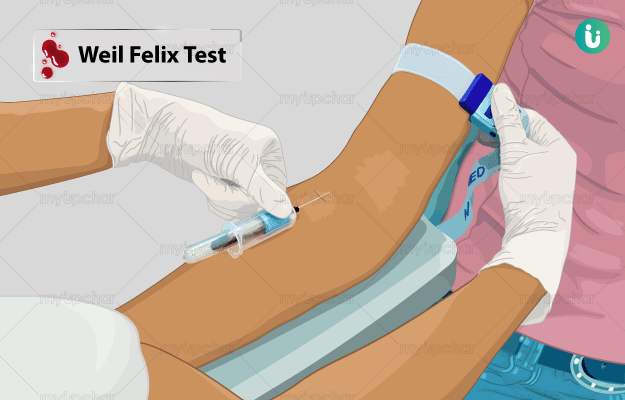What is Weil Felix test?
The Weil-Felix test is a diagnostic test for rickettsial infections, which are caused by a type of bacteria called Rickettsiae. This test detects antibodies against Rickettsiae in your serum (clear liquid that remains after blood clots) and confirms if you have a rickettsial infection. Antibodies are specialised proteins produced by our immune system to fight harmful substances like microbes.
Rickettsial infections are common across the world, but a few types are more prevalent in certain places. For example, scrub typhus and Indian tick typhus are common in India. Rickettsiae can only survive inside living cells and are found in ticks, mites, fleas, lice and animals (mostly rats and mice). The infection commonly spreads to humans by the bite of infected insects.
The basis of the Weil-Felix test is that some Proteus bacteria share common antigens with Rickettsiae. Antigens are proteins through which your immune system recognises foreign substances. These are usually present on the surface of the microbes.
When Proteus antigen suspensions are mixed with the serum of an infected person, the rickettsial antibodies in the serum react with Proteus antigens to form visible clumps (agglutination). Agglutination indicates that the person has rickettsial infection.
The following Proteus strains (subtypes) are employed to detect rickettsial antibodies in the patient’s serum:
- Proteus vulgaris (OX-19 strain): It can strongly react with antibodies produced against spotted fever and typhus.
- Proteus vulgaris (OX-2 strain): It strongly reacts with antibodies against spotted fever.
- Proteus mirabilis (OXK strain): It reacts strongly with antibodies against scrub typhus.
Nowadays, tests that directly detect the bacteria, such as polymerase chain reaction (PCR), and tests that demonstrate antibodies against rickettsial antigens themselves (indirect immunofluorescence assay, latex agglutination), are preferred to the Weil-Felix test. However, Weil-Felix test is a useful rapid screening tool for rickettsial disease in places with limited laboratory facilities.
































